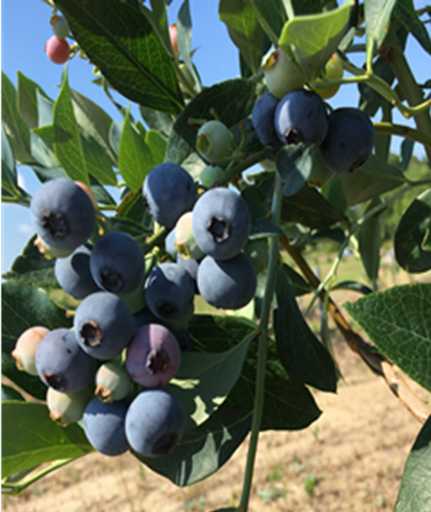Small Fruit News
The Southern Region Small Fruit Consortium posts articles and sends the SMALL FRUIT NEWS to subscribers four times annually.
-

This study was implemented to determine cultivar recommendations for blackberry and raspberry production in central Alabama, and to determine whether incorporating shade enhances productivity and fruit quality enough to justify the extra expense.
Posted in: Summer 2024 -

This article is the first of a series on work comparing fruit quality traits of major commercial cultivars in southern highbush (SHB), rabbiteye (RE), and northern highbush (NHB) cultivars.
Posted in: Summer 2024 -

Plan to attend one of the upcoming strawberry preplant meetings in Louisiana, Virginia and North Carolina.
Posted in: Summer 2024 -

Soil-less substrates in pots or bags can be replaced year to year, eliminating the need for crop rotation and fumigation. Two of the most used soil-less substrate components worldwide for strawberry production are coco fiber and peat-based mixes.
Posted in: Spring 2024 -

Like many specialty crops, blackberries have relatively few registered herbicide products for weed control. For new herbicides to be registered, crop safety must first be demonstrated in field settings.
Posted in: Spring 2024 -

Strawberries grown in the Southeast incur significant losses from fruit rot caused by fungal pathogens. Without proactive cultural practices and an effective spray program, more than 80% of strawberry flowers can be lost to Botrytis fruit rot when environmental conditions are favorable.
Posted in: Spring 2024 -

Blackberry yellow vein disease (BYVD) is the most important virus disease affecting blackberry production in the southern United States.
Posted in: Spring 2024 -

Phytophthora root rot, caused by the soilborne oomycete pathogen Phytophthora cinnamomi, is the most frequently diagnosed disease of blueberry in Georgia and is a common disease concern in blueberry production throughout the southeastern U.S.
Posted in: Spring 2024 -

Anthracnose fruit rot exhibits a latent period during which the strawberry plugs are infected without exhibiting visible symptoms, making it a suitable candidate for assessing the scalability of disease detection using spectral imaging techniques. Early detection plays a pivotal role in selecting the most suitable disease management techniques and in curbing the transmission of infections…
Posted in: Winter 2024 -

The Mississippi State University Extension Service will be hosting two workshops for blueberry growers in 2024 — an in-person workshop in Hattiesburg, Mississippi on February 8 and a virtual workshop on February 15.
Posted in: Winter 2024